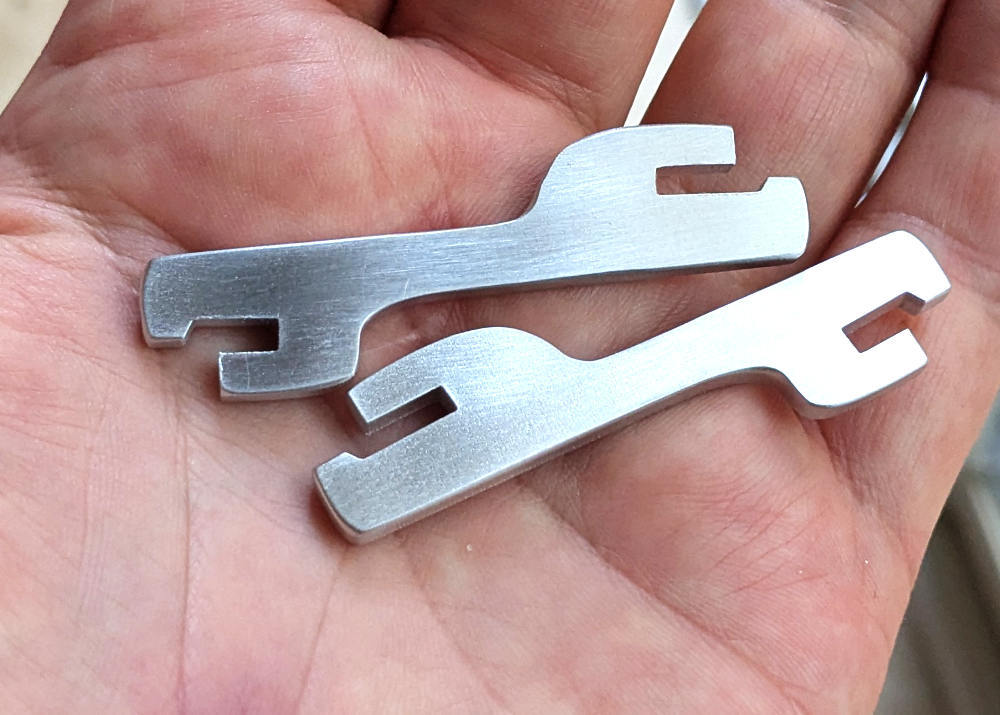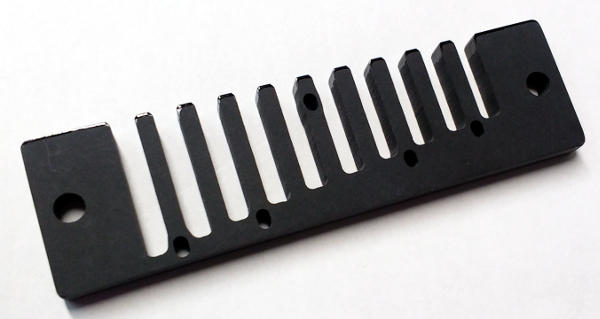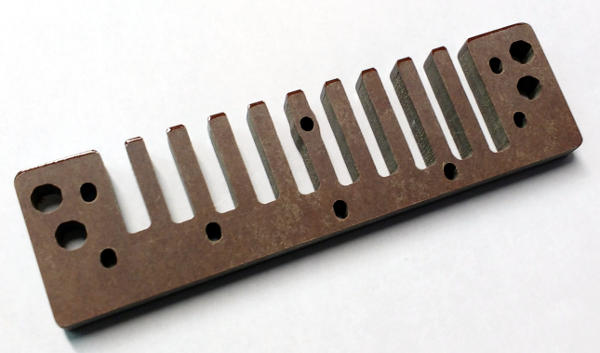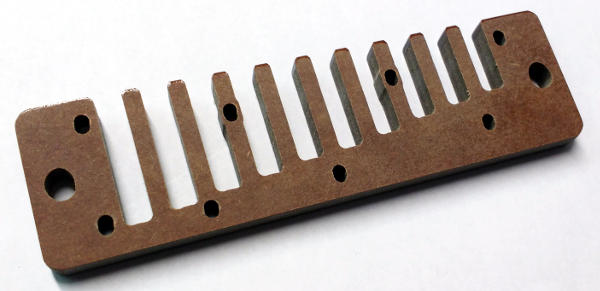Andrew's blog
Adapting to changes in trade and imports
What's it like to use an analog Strobe Tuner?
An analog strobe tuner like a Peterson 490, Peterson 450, Peterson 420 or a Conn ST11 all use a rotating strobe disk and light flashing at the frequency of the pitch you are playing to show you what you are hearing. You can see more than one note at a time and you get to see how they are, relative to each other.
You are tuning sound at the speed of light. That's something no other tuner - even the so-called digital strobe tuners can't do. They work at about an interval of 100 milliseconds. That's why the needle or any other form of display is so choppy.
Compact reed plate claws tweak
 Making both reed plates flat is one of the easiest things you can do to get more power and better control of your harmonica. It's very effective.
Making both reed plates flat is one of the easiest things you can do to get more power and better control of your harmonica. It's very effective.
All my kits come with some version of the reed plate claws. They are the tools I use to straighten reed plates on my custom harmonicas.
Music makes us human
A cover of my favorite song.
The Hockey Stick (for tuning the harmonica)
 Just about everything you do to a harp affects the tuning so it stands to reason the last thing you should do is adjust the tuning.
Just about everything you do to a harp affects the tuning so it stands to reason the last thing you should do is adjust the tuning.
But how do you make adjustments to the tuning without messing up the shape of the reeds or undoing other hard-earned adjustments?
To lower the pitch using a file, you can support a blow reed while the reed plate is still on the comb using the Hockey Stick.
(FAQ) Should a rank beginner buy a custom harmonica?
A good file for tuning a reed.
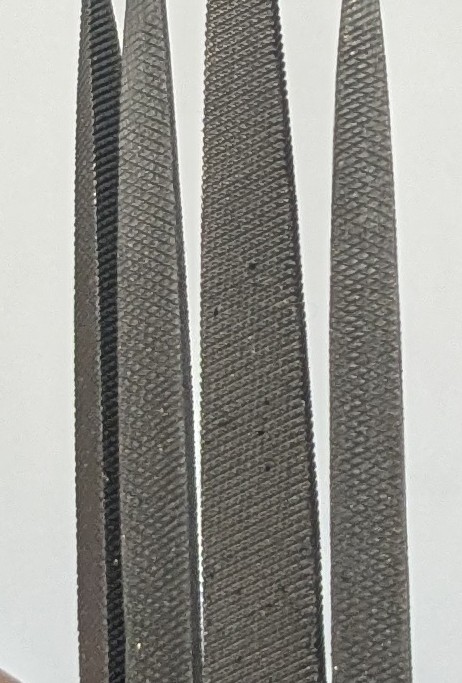 "Recently, the price of Grobet files has exploded. I can't afford to put them in my kits."
"Recently, the price of Grobet files has exploded. I can't afford to put them in my kits."
A file is my preferred way to tune a harmonica reed. With good support of the underside of the reed, you can raise or lower the pitch by a whole semitone without changing the shape or affecting the performance of the reed.
I've been using 0-cut Grobet files which are Swiss type.
Dark Comb model types
My combs make your instrument comfortable and easy to play. These are the only combs available to have been flattened to my standards.
Marine Band Deluxe, Marine Band Crossover and Thunderbird. Also suits Marine Band 1896 harmonicas if you want to change the nails to screws. This includes:
- Marine Band 1896 (1950s to current *).
- Pre-war Marine Bands, including "mouse ear".
- Pre-MS Blues Harps
- Wooden-combed Old Standy.
- Pre-MS Meisterklasse
(*) Marine Band 1896 harmonicas manufactured around the end of the 1980s and beginning of 1990s had a slightly different nail hole pattern and you can chose to only use two screws to hold the plates to the comb or to do a little extra work to create a third hole in the plate. These harps offer much less potential than Hohner harmonicas made before or after this period. I suggest you lower your expectations when trying to upgrade these instruments.
Fits the following harps:
Big River
Blues Harp
Crossharp
Proharp
MeisterKlasse
Fits Golden Melody classic harmonicas
Fits the following harps:
Suzuki Manji, Promaster, Suzuki Olive.
Also fits
- Dabell Contender
- Dabell Noble
- Suzuki HarpMaster, BluesMaster (*)
- Bushman Delta Frost(*)
The stock Manji comb is slightly smaller than the reed plates. My comb is a hair bigger than the plates so that the harp is more comfortable to hold.
Fits Seydel 1847
SOLIST PRO
and
FAVORITE
Order combs HERE.
I will not be offering custom Golden Melody Progressive series harmonicas
Hohner has made some of the best instruments and it dominates the diatonic harmonica market worldwide. There is no company with a bigger share of the market. Not even close.
When Mathias Hohner developed the Marine Band 1896, he was the innovator, the machinist, the product manager, the shop worker, marketer and owner. It took him years to develop the gold standard harmonica with the magic reeds. Once he got it, he was hesitant to change.
And once his kids continued on, the product stayed mostly the same with some slight changes and an almost unnoticeable drop in quality until the late 1980s.
Then Hohner had some ideas.
Mostly bad ones.
To try to be more competitive, the shop significantly lowered its standards and Marine Band harmonicas in the 80s and 90 were terrible. They eventually noticed their mistake and tried to return the quality of the 1896 back to what it was.
Marine Band 1896
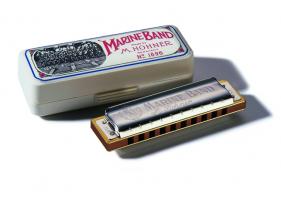
They also tried to automate the process and created a new design that could be made with less human work required. The MS series mostly sucked. The reeds are further away from your vocal tract because the reed plates are bigger and the airtightness is just awful.
MS reedplates:
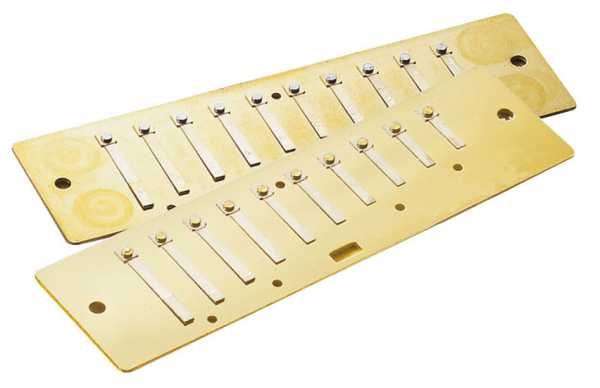
To mitigate the issues with Marine Band wooden combs, they redesigned the sandwich-type harmonica and created a recessed-type instrument with an ABS plastic comb.
That actually worked pretty well.
They stuck to something simple.
Special 20:
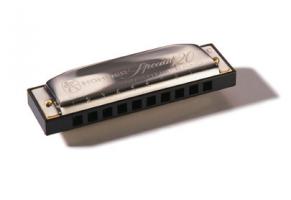
By using cheap ABS plastic and not trying to make the comb a feature of the instrument, they created something that was just as playable as a good Marine Band and it surprisingly had a nice tone for an instrument with a 20-cent cheap plastic piece. I think the secret there is the comb is so light and minimalist, it doesn't get in the way of the reeds.
And is has the same magic reeds as in the 1896. So it's a mass-produced Marine Band that doesn't have the risk of comb swelling or failure that the MB 1896 has.
To this day, the Special 20 is the world's best selling off-the-shelf harmonica.
Harmonica customizers take the whole instrument apart and rebuilt it from the ground up. We correct every defect and make the framework perfect so we can properly adjust the reed work and tuning to make the instrument perform exceptionally.
And though we perfect everything, we still assemble the instrument in the best way possible to maintain airtightness for its whole, long, life.
The Classic design of the Golden Melody is a sandwich type, which is very air efficient if the reed plates and comb are perfectly flat.
Sandwich-type Golden Melody:

The Progressive design of the Golden Melody is some weird, douchey nightmare. It seems to be change for the sake of change rather than change for the sake of improvement. The same mass production flaws are present in the new design as the old - and those can be corrected.
But there are also some foundational problems with the instrument so it's not a candidate for customization.
Progressive GM:
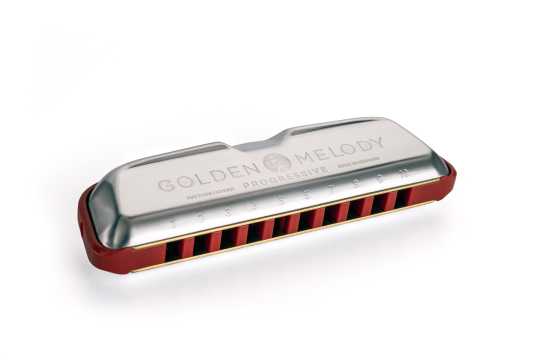
Bless its heart.
Hohner should have stuck with simple changes.
"Is there a way to fix it without breaking it or is it just dead?"
Daniel on Facebook asked for help with the nine draw reed. Here is what I would do.
Flat Sanding the draw reed plate for airtightness
This is the simplest thing you can do to any diatonic harmonica to get the most improvement.
Use 220 grit sandpaper and a flat surface. No need to buy a precision surface plate made of granite. Just something very flat. And one quick pass with 220 grit is all you need. More passes and a finer grit will actually make things worse and make the surface round, albeit shiny and polished - which is not what we want.
For more improvement, use one of my Dark combs:
https://harp.andrewzajac.ca/Combs
How to use my Quick Customizing Videos
My Quick Videos are jam packed with all the information you need. Even the intro clip gives you insights that you can't find anywhere else.
All of the customizing concepts I use on my custom harmonicas are covered here. This set is complete.
There is a pdf with extra information and charts you might like to print out and keep handy in your workspace.
The twelve videos run for a total of 31 minutes.
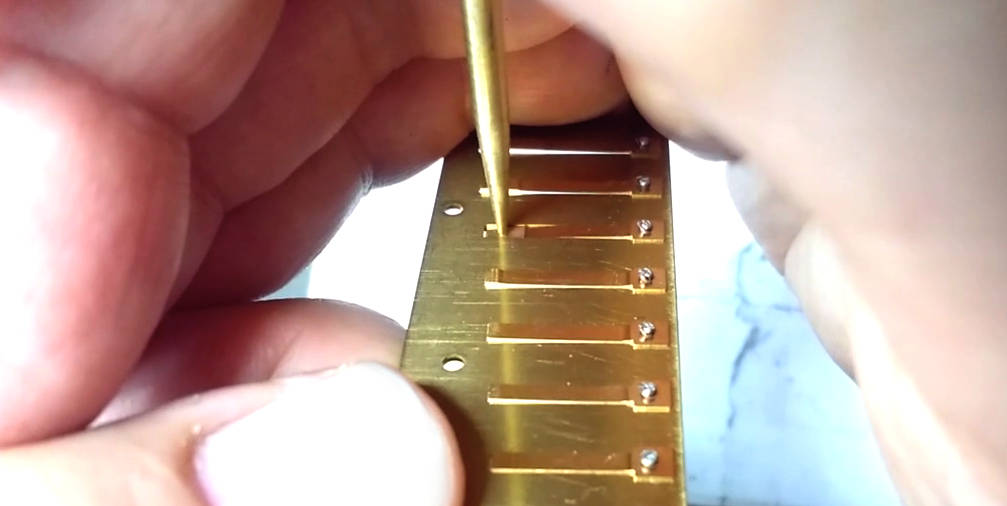
This doesn't mean that you will cover all the material in about a half an hour. Most of the techniques and concepts will take you weeks of practice to learn. You will need to get your hands dirty and do the work.
Everybody learns differently. Some need some step by step and others need to do things for themselves and will only need to get a few hints along the way.
For the player who really doesn't want to have to do any work on their instrument - but we all have to - these videos try to show you what to do so that you can get right back to playing.
For the player who is curious about getting more power and response from their instrument, the more advanced videos show you what you should aim for. You will probably watch some of the videos more than a dozen times as you make progress and gain experience before you have gotten everything they have to offer.
I recently reviewed every video looking for things I could improve. I thought I could update them. But I don't think I can do any better. They still hold up.
They do exactly what they say they do and I think you will get a lot of value from them.
Multi tool: One of the reasons I find it really cool!
Sometimes I solve a problem and that leads to a new standard way of doing things. Here, I show you how I leapfrogged from trying to make a task a bit faster and more convenient and discovered how the new method was also better and more predictable than the old way.
I integrated this change into my Multi tool.
Andrew Zajac customization multi-tool

An intuitive design makes this tool help you upgrade or customize the inner workings of your harmonica with maximum speed and precision.
Use it for:
Framework
- Help the process of centring the rivet pads on the reed plate
- Embossing
Reed work
- Use this tool to shape the reeds for optimum response, tone and volume dynamics
Tuning
- Raise the pitch or lower the pitch without affecting the reed shape

